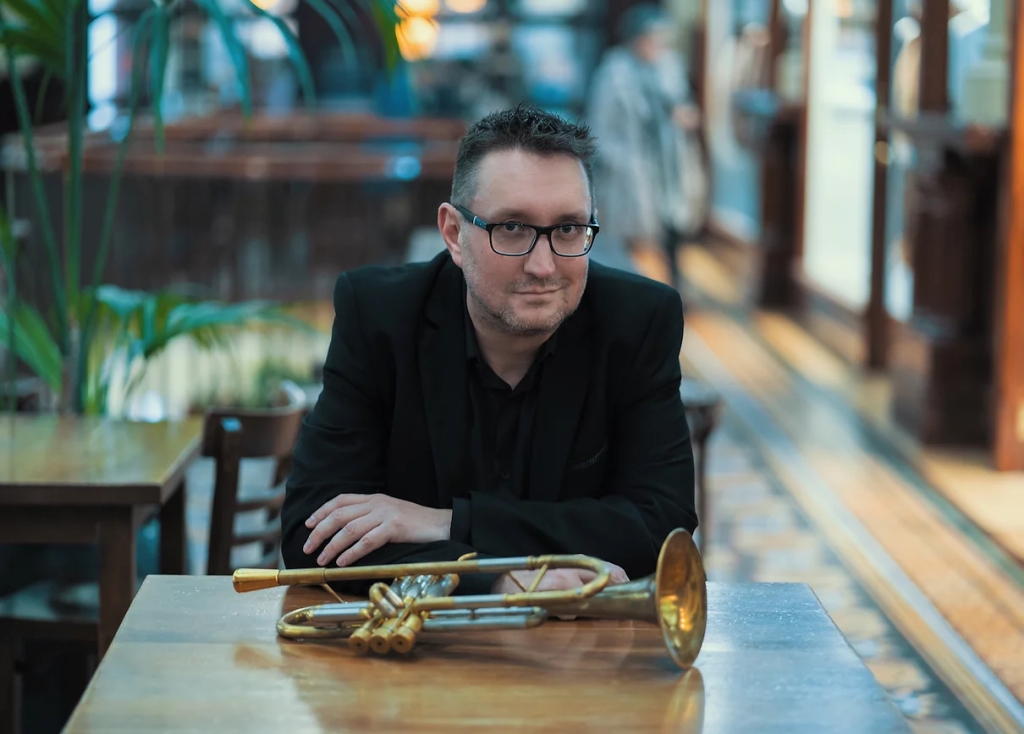
This interview took place while jazz trumpeter Dave Lisik was in London on study leave. It had been teed up for some time but our plans were interrupted by the chaos that trailed on the heels of Covid. Dave has many strings to bow and not least his role as Senior Lecturer, Coordinator of Jazz composition at the School of Music, Victoria University, Wellington. Among his disciplines, are teaching Jazz pedagogy, composition, theory and arranging. Born in Canada and completing his higher education in various US Universities, he arrived in New Zealand in 2010 and he has remained here ever since, involving himself in a variety of important musical projects.
On a personal note, there has been a long gap between posts and I appreciate the continued support and blog views during my absence. In July, I contracted a bad case of Covid, which has unfortunately been followed by debilitating Long Covid. I will endeavour to keep writing, my brain allowing, and I have reviews and interviews waiting in the wings. I can not attend live gigs at present, but I have access to various gig sound recordings and lots of review copies of new albums. Again, thanks to those who follow JL32. I appreciate you all. Improvised music is too good not to share.
JL32 Thanks for giving me your time Dave:
I am interested in the teaching connections between Canada and NZ. You, Ron Samsom, and Keith Price, all teaching Jazz studies at New Zealand Universities. A Canadian occupation seems to be occurring.
DL Ha, yeah, Keith is from the same province I’m from and we were friends on FB. He saw the advertisement for Auckland University which I’d posted on my Facebook page. So in that case it was not random.
JL32 Your bio says that your musical education began in the Canadian Education system and I gather that certain places in Canada have an enlightened musical education curriculum.
DL Manitoba, the province where I’m from, has a really strong focus on music education. It was the first place in the world to have a government-sanctioned Jazz curriculum. So pretty much every high school and junior high school had a Jazz band and a jazz curriculum to follow, so I wouldn’t be doing anything that I’m doing now if it wasn’t for that system in place. A lot of people do what they do because they had parents, siblings or a relative exposing them to that, but it wasn’t my experience. My interest in Jazz arose out of the jazz curriculum.
JL32 What was your first instrument?
DL The organ, I took organ lessons from second grade and sixth grade. What we don’t see in New Zealand is elementary-school music. My experience was that in Kindergarten (year one here) we had a forty-minute music class which happened four times in a six-day cycle. So four classes a week from the first day at school. So when ‘band’ starts, everyone knows the basics of theory and practice.
JL32 Learning music is essential no matter what field you’re going into. It gives you life skills, right?
DL Music should be taught more than it is in NZ. I have two daughters and that is a concern, but in my case, what they don’t get in the system, I can supplement.
JL32 In Europe, an appreciation of the creative arts is so embedded in the culture that it is not even a topic of debate. Do you see gradual change happening here?
DL So, we’re running traditional university music programmes throughout the country but we don’t have that (early learning) foundational strength and we are drawing on a smaller base. I do have reason to be hopeful though. I have noticed a considerable uptick in the abilities of university-level students in the thirteen years that I have been here.
It often feels fragile though, as if it could disappear. Rodger Fox and I have been running the New Zealand Youth Jazz Orchestra for eleven years now but covid meant that we couldn’t run it during the last two years. You build things and it can be sort of precarious unless legislation is in place. Receiving quality students in an intake can depend on having a good teacher in a particular high school and unfortunately, those teachers come and go.
JL32 It has been that way in Auckland as well. A few exceptional secondary school teachers bring on some amazing musicians, and then they leave.
DL I have adjudicated the KBB Music festival for a couple of years and there are like 750 Jazz kids at that festival and 43 Big Bands which means that there are enough people interested in Jazz to proceed from there. If we could get the right material to those students we could create something miraculous in no time. So the bands are there but getting quality pedagogical instruction to those teachers is important, teaching improvisation skills for instance.
JL32 What do think about hybridity because that is attractive to many Jazz students today? Maybe that has always been the case. By its very nature, I believe that jazz has always been open to other influences and forms.
DL I have some students looking into this right now, but some stupid arguments rage on Facebook. You know, ‘what is Jazz’ arguments?
JL32 Yeah, tell me about it, who fucking cares as long as it’s good music informed by Jazz right? There are some notable examples of Jazz students doing very well in the indie-pop or mainstream music world. The tag is less important among younger players. The French group Aquaserge do not tag themselves as Jazz at all, but when you listen it is all there in the harmonies, textured dissonant horn lines with bass clarinet etc,
DL When Jazz trained people play other types of music, I’m thinking the Marsalis Brothers, Chris Potter, Donny McCaslin etc. They bring jazz to a classical or hip-hop project because it is part of them. It might be playing a classical piece slower, whatever.
JL32 Mehldau interpreting Bach, or Jarrett.
DL When someone at the highest level, trained in the Jazz discipline, does something like that, I am endlessly fascinated by it. I think, what can a brain like Brad Mehldau’s bring to bear here? As a composition teacher I look to see if it’s interesting and in the end, that’s all that matters. Every new note and every choice is a chance to be as interesting as possible. Everything else is a tool to that end.
JL32 Any further examples?
DL The best musicians I’ve had the opportunity to record with are New York musicians and most of them are very capable of undertaking projects that are very jazz adjacent, like Seamus Blake and Alex Sipiagin. They do not get enough credit for the capability they possess to play music outside of the genre norms. A restricted view some have.
JL32 In classical, Glen Gould!
DL He was an absolute genius, a Canadian.
JL32 I didn’t know that he came from Canada.
DL Yes, a brilliant and strange dude. Stylistically and in mentality, he was not a Keith Jarrett, but you could almost imagine he could have been with the right influence. Keith Jarrett is one of my absolute favourites and although it’s an overused term, if anyone could be called a genius it is Jarrett. I can listen to that trio for hours at a time, my concentration, unbroken. He didn’t invent the format and plays standards but in an endlessly captivating way. They don’t have to do the expected, it just draws you in.
JL32 And the Sun Bear concerts cut deep.
DL That’s a big box set for sure. I saw him do a solo concert in the Chicago Symphony Hall just before I came to New Zealand and I would have travelled anywhere in America to hear him. People say, what’s your favourite Jarrett but it’s difficult to choose, it’s the body of work.
JL32 Some Jarrett lovers ignore the work he did with Dewey Redman and Charlie Haden and I think, why would you do that? As you say, it’s a body of work. So to get back to your musical journey, it looks like you then headed south, over the border.
DL Yeah I headed just over the border, first to North Dakota. I did my undergraduate studies there and then I completed my masters in Iowa, again south, but not too far from Canada. Then I taught high school for a few years in Canada before heading to Memphis in 2003 to do my doctorate around that time. Post 9/11, I thought, what is it that I wanted to do? It was to write more music, study more and play more trumpet and Memphis was fantastic for that. I was very lucky as I got to study for my master’s and doctorate for free.
JL32 You weren’t tempted by ‘McGill’ in Montreal which has a strong focus on trumpet?
DL I did think about it seriously. I was probably a couple of steps below where I needed to be to deal with McGill as an undergrad. Now, I think about what it would take for my students here in NZ to take that giant leap and consider a McGill or New York. Those seemed pretty insurmountable concepts when I was 17yrs old. I was winning awards at school festivals but there was still a gap to get me to that next level. That was the gap and that is always the gap in Jazz. It goes back to what you learn in a school orchestra, say playing the violin. If you can read music and play then you begin to imagine that you could do that in university. It’s the same deal.
With a Jazz band, there is this whole other dynamic, being able to play solos and improvising, and if you don’t have that, doing a jazz major may not be on your radar. That’s one of the overlooked components in teaching Jazz at high school. It’s not that you are producing great improvisers, but setting them on that path. A city like Auckland is big enough and vibrant enough to have a vibrant high school jazz scene, involving serious tax dollars to get there, but it’s doable. But I am one step removed from solving that problem, I don’t live there.
JL32 It’s dependent in Auckland, or New Zealand, on being lucky enough to find yourself with a gifted music teacher, one who grasps that (we discuss a few examples of gifted music teachers).
DL Almost everyone in the Jazz world has had the same experience, that they had a great music teacher. And those people inspire, some of their pupils then realise the importance of becoming Jazz teachers and they say, I could be that person. But not many New Zealand Jazz students can imagine themselves as being the Jazz teachers of their younger selves.
JL32 A similar country the size of New Zealand is Norway and they are producing so many great improvisers and probably underpinning that will be lots of great teachers. And they have shown innovation.
DL Some places are more comfortable with a wider variety of improvised forms for sure. Following the more traditional path though. I am a bit cautious about what I advise students to do, a bit more traditionalist I guess. I had a student Henry Sherris, one of the more gifted students to come out of the high school programme. He plays on the recent CD that we released. He didn’t have a strong high school band to participate in, but I taught him trumpet privately for six years. He got a scholarship to the ‘Manhattan School of Music and he’s in his second year there. He left in the middle of 2020 with covid happening. He had a suitcase full of masks and just decided to do it. It was brave. I was very comfortable with where he was at and he has Scott Wendholt as a teacher in the Vanguard Jazz Orchestra.
So I can simultaneously be impressed with the variety of musical forms on offer (and teach more traditionally) and I am against the idea of a university being solely about training for employment opportunities, but that is still a legitimate concern. It’s an evolving situation and we will see where those who take a less conventional route end up. We have had a few students who got scholarships and ended up in places like the ‘Manhattan School of Music’. And, one has ended up subbing in the ‘Vanguard Jazz Orchestra’ and you are at that level at 23 years old, then I feel comfortable seeing what happens next, but with the knowledge that we didn’t steer them in the wrong direction. If your ambition is to compete with the New York guys, you need to be able to speak the language similarly.
JL32 Do you think that there are less traditional or alternate avenues that allow students to progress to that higher level? Once upon a time, jazz musicians polished their skills on the road. Some say that you should learn the fundamentals and then put yourself in danger and learn by getting your arse kicked by better musicians. (this topic always elicits a variety of viewpoints during interviews).
DL In the classical world there are many opportunities to reach a high level of competency, but I remain unconvinced that people can achieve that high level of competence or speak the language sufficiently unless they go to a New York Jazz school or a handful of other jazz schools. To think that you can do that another way, I’m a little sceptical. But the vast majority of Jazz musicians will maybe never end up with that as their goal (competing with top NY-based musicians).
JL32 New York is certainly the acknowledged nexus, there is a New York sound, but I hear great musicians coming from places like Israel. They come to New York bringing their own thing and interacting and it rounds them. But there are other examples like Chicago, a distinctive sound but very different — a lot of free music. Groups like ‘Irreversible Entanglements’, so maybe it depends on where you think you should be heading.
DL Sure.
JL32 There are the Northern Europeans as well. Germany and the Nordic countries are centres for Jazz innovation. And the UK is often underestimated and I’m hearing some astonishing stuff from there.
DL Oh yeah, My record label SkyDeck just released an album for a young guy who is going to do his master’s at the Royal Academy in London. He’s an alto saxophone player, a pretty interesting young player, an ad-hoc session that they recorded in France, but he’s a Londoner. Yeah, I agree, I’m going to Ronnie Scotts soon because the Mingus Dynasty will be there from New York. Some of the guys with who I did a recording session in December will be there, Alex Sipiagin who I work with a lot, Conrad Herwig and maybe Seamus Blake. I’ve done several recordings using the Mingus Dynasty rhythm section. The recording of Ryan’s that I did in December was probably three-quarters of the ‘Mingus Big Band,’
it will be cool to see Alex again. He and I have done about fifteen CDs since he first came out, but not in person since covid.
JL32 I love Ronnies. It is like the Village Vanguard, it defies conventional wisdom regarding layout etc, your knees are under your chin, and you recall Ronnie joking endlessly about the food, but it has history and magic. Sonny Rollins is said to have locked himself in there one night and composed the Alfy music there as he said the wall oozed the spirit of those who played there.
DL I will be heading there in a day or so.
There is no clear career path in Jazz like being a doctor, where you study, graduate and get a job at the end of it. It’s more like putting together the pieces of a big puzzle and hoping that when an opportunity arises, you will have done the preparation and will know how to reach out and take it. And every student will have a different idea. Some will do exactly what you say and some will do nothing that you say. Some will come up with stuff you’ve never thought of, some will not go into music and some will, and that’s OK. It is really about preparing students for opportunities.
JL32 Looking through your discography and projects is interesting to see the variety. I detect a direction of travel although there is diversity. I was drawn to the work you did with Richard Nunns and the Canadian pianist Amy Rempel.
DL I arrived in New Zealand in 2010 and recorded that in the first couple of years. And other Rattle releases followed 15 or 16 CDs in one year.
JL32 Oh wow I hadn’t realised it was that many.
DL Rattle had been around for 20yrs at that point and we doubled the catalogue in 1 year. In all 40 releases
JL32 Because you have these strong relationships with well-known trumpeters like Tim Hagens and Alex Sipiagin, you might be leaning more towards writing, arranging and producing.
DL Yeah, I am doing many things at once and also having a young family influences what I do. And to top it off I broke both of my arms last year and I now have a plate in my elbow and a titanium plate in my wrist.
JL32 That’s right, I recall seeing some gruesome FB pics.
DL That made it hard to keep up the necessary practice required for the trumpet. My ability to play is fine but it was the time spent in a cast. The loss of 7 weeks can leave you with a lot of work to catch up on. I’m in London now on research leave so my plan when I get back, is to work on that. But I have some quintet projects coming up where I am the principal trumpeter. I am flexible, on certain projects when with Alex Sipiagin for example, who is one of the best trumpeters alive, I would rather listen to him than me (laughs).
The project that just came out with the ‘Endeavour Jazz Orchestra’ is something that I have put together specifically for New Zealand composers. Essentially for people who have been my master’s and doctoral students. A few projects are coming up that I will arrange, but these projects are about them, the students I taught. It is part of my contribution as a teacher, to teach them composition skills and to help them to document their work.
That project was Ryans’ (Ryan Brake) but the next one will celebrate Thad Jones’s 100th birthday. We will use some Thad Jones charts, which are fun to play, but with some peripheral projects that we will hopefully bring some attention to bear.
JL32 With the Thad Jones charts, will you keep the original orchestration or re-orchestrate to suit a particular lineup that you have in mind?
DL We will do what the Europeans do when playing such material. Not slavishly trying to sound like the Mel Lewis or Thad recordings but following the tradition. It will be a fun project and it will involve a few guest artists. Our aim with the ‘Endeavor Jazz Orchestra’ is to create a nice library of releases that are maybe attractive to a broader audience.
JL32 Auckland’s AJO has a similar focus on NZ composers and arrangers, but getting the word out and finding opportunities to play is always a problem for big bands. Your focus is more on bringing on the younger players perhaps.
DL An advantage that I have is that I am supervising the students from undergrad onwards, so we are producing the music and recordings in-house. I try to ensure that the playing is on a certain level and then having a few guest artists elevates the level of the playing. We just got a 4-star review in Downbeat for the album (‘Solipsis’, SkyDeck Music). I know that there are differing views, maybe it’s a tall poppy thing, but some ask, why are you bringing in non-NZ musicians on a project promoting NZ music? I think it elevates the project and I’m into promoting the compositions of the particular artist. That is my way. And other than John Riley, the entire thing was recorded in Wellington.
Also, locals Nick Granville and Roger Manins play a couple of numbers and they are great. So we certainly don’t think that there are no worthy Jazz musicians in NZ because that would be wrong. For example, Roger (Manins) plays several great solos on that album and in fact he plays great solos on every album he is on. We already know that and Nick (Granville) is a great guitar player and he plays a lot of great written parts as well solos.
JL32 And comping can require skill too.
DL Oh yeah, the role of the guitar, perhaps more so than the piano as a comping instrument, brings so much variety than what is on the written page. With the greatest players, it’s being appropriate for the moment and being able to respond quickly and sensitively. Like John Escreet, the piano player who played on a CD I did with Chris Potter and Alex Sipiagin a few years ago. He is British and I had not played with him before. What he adds to this album every second that he is playing makes you feel like, that’s the right choice every second of the way. On one of Alex’s albums, Chris Potter plays a ridiculous solo and later, at the mixing stage, John suggested that he transcribe it and play along on the keyboard. A week later he comes back and he lays down this technically difficult solo in one take. There is a video of it. So on the album, Chris Potter and John Escreet are playing this ridiculous solo in unison.
JL32 And I see that you are about to release a ‘Porgy & Bess’ project. How is that preceding?
DL We have recorded parts of that already and Alex (Sipiagin) is going to record all of the Miles Davis parts. That will be an interesting album because there are 5 woodwind players, but only one is playing the saxophone. There is a lead alto part, but then clarinets; not really doubling, just flutes and clarinets and there are trombone parts and three french horn parts. It has been a project in the wings for a while, but it is such a beautiful piece of music. It is my favourite of the Gil Evans and Davis albums.
JL32 And it is the ultimate gift as it keeps giving and sounding fresh. I particularly love the Paulo Fresu version with the ‘Jazz Orchestra of Sardinia (featuring David Linx and transcribed from the Evans charts by Gunther Schuller) – and another version by Fresu, ‘Kind of Porgy & Bess’ with unusual instrumentation including Dhafer Yussef on Oud.
DL There will always be people like that, no matter how often you tell them about how much money they will never make. The Chris Potters and others just push past that and achieve excellence. They fall in love with the music and determinedly seek out the information. They have to have that information and there will always be people like that. The impulse has no geographical boundaries. I get requests for trumpet information from places like Kenya.
Some will succeed despite their circumstances but in musical education situations, you don’t want that. You want students to succeed because of the situation.
JL32 Tell me more about your label SkyDeck. Was there a predecessor?
DL I lived in Memphis for 7 years before I came to New Zealand and I released a few quintet CDs and a big band album on a label named Galloping Cow Music, which is still the name of my ASCAP publishing rights. Then I worked with Steve Garden after moving here (discussed earlier) and years later while I was in NY, I decided to push ahead with the Vanguard project, and other projects, many of which had some research funding; so I decided to form my label which is SkyDeck.
Many Jazz artists are taking control of their work these days. I am not collecting any money from people to release their projects, and in some cases, I am paying for distribution, but I have a good job and I can do that. For example, Umar Zakaria’s album a few years ago, Roger Manins was on it and Leo Coghini’s solo albums (JL32 reviewed both). So it’s not about the money when recording these student or former student projects, but about providing the infrastructure.
We have a nice recording setup in the student union building, which is the big band rehearsal room. There is the essential isolation booth for the drums and we can make as good a recording as anywhere else in the country. The room is pretty dry which is ideal for rehearsing and recording. Some better-known performance rooms are great for chamber music but atrocious for anything with a drum set.
JL32 The Auckland Uni Jazz school also has a good room, which was set up originally for radio orchestras, so ideal. Jazz recording certainly favours some rooms over others. I am more familiar with the old Massey room before you moved up to Victoria.
DL That room wasn’t terrible, but it had some weird steel panels on the wall that would vibrate at certain frequencies. The Rattle recording with Richard Nunns was done there and it turned out well; he was close-miked and we got good sound capture. The one I like best from that era is his ‘Ancient Astronaut Theory’ which is only him. Sometimes up to 50 layers of his instruments; just him with me composing from his sound library.
JL32 So how many albums has SkyDeck released? The Wikipedia page has a list but a few like Thad Jones and the ‘Porgy and Bess’ are still awaiting release.
DL Some are released under my name, some under the Endeavour Orchestra and then there are various artist releases, but I am involved in the post-production work like the mixing, some editing etc. And there were a few duo CDs I released, Bonnie and Clyde, Joust and Nemesis. Those have Dave Kikoski and Alex Sipiagin playing, but my compositions. Then there’s the big band project with Rodger Fox and Michael Housten which I was involved and others. I am playing the trumpet and producing on the Endeavour Orchestra CDs like ‘The Hillary Step’.
JL32 ‘Coming Through Slaughter, the Buddy Bolden album was released as The Dave Lisik Orchestra featuring Tim Hagans. That is so slick. I take it that the name derives from Michael Ondaatje’s book. Another Canadian.
DL Tim Hagans was someone I admired, but I didn’t know him. When I graduated with my doctorate in 2006 I was asked, what was I intending to do with it (the Buddy Bolden project). There were trumpet solos, and the question arose, who would play them? As it was conceived with Tim Hagens in mind, a friend Luis Bonilla, who was in the Vanguard Orchestra knew Donny McCaslin, and he knew Tim Hagans and both agreed to become involved. And suddenly I had a CD which was beyond my expectations with these guys who played at a high level.
Using ‘Coming through Slaughter’ got me into a wrangle with Ondaaje’s publicist and lawyer, but after a few terse exchanges and a cease and desist letter (which was roundly rebutted by my lawyer), the problem just evaporated. I don’t know if he even knew about it.
JL32 And how about ‘Donated by Cantor Fitzgerald’?
DL That was my 9/11 project. Cantor Fitzgerald was an investment firm which occupied the top floors of the World Trade Centre and lost a whole lot of people. It was a niche story within a bigger story. The album has Tim Hopkins and Colin Hemmingsen on it. It needs a video to go with it and I will probably do that. It is challenging to listen to, like the event. One hour three seconds, one track.
JL32 And can you tell me something about the ‘NZ Youth Jazz Orchestra’?
DL That entity is specifically a youth Jazz Orchestra for high school students. The NZ Jazz foundation has been running that since around 1981. I am the chair of that now and Roger Fox and I have been directing it since 2011. Whereas the Endeavour Jazz Orchestra is the best NZ jazz musicians, Roger Manins, Mike Booth, also, former students of the NZSM like Louisa Williamson (readers should check out her album ‘What Dreams May Come).
JL32 Yes she’s doing very well.
DL So, former pupils like Partick di Somma the bass trombone player and Leo Coghini who you know of and reviewed. Depending on the project and the guest artists involved, the personnel can change. It’s not finalised yet, but we’re hoping to do a thing on Michael Brecker. My all-time favourite musician. He imprinted himself on me at a young age.
JL32 And Randy Brecker are still doing amazing stuff too.
DL Imagine having Michael as a younger brother – there must have been a lot of respect and healthy competitiveness. Sometimes students say to me, why do we have to compare ourselves to everyone else? But I say, not everything is equal. Getting a job in a symphony orchestra is competitive. Music is a craft and if you want to be good, you have to compare yourself to other people. You have to achieve a certain mastery of craft before anyone cares what you have to say as an artist.
I can listen to Chris Potter play in any style because he has mastered his craft. Even the weirdest shit imaginable, but I’m in because I’ve bought into the brand. When I listen to a Jazz musician I can hear if they’ve done their (jazz) homework. The definition of Modern Jazz is music played by Jazz musicians who have emersed themselves in, or studied Jazz; not a particular style.
There are exceptions such as Jazz musicians playing classical music and deliberately not playing Jazz. But if they want to play some weird multi-metre fusion thing, then they bring their jazz sensibilities to that. Utilising the encyclopedia that’s in their brain. I don’t mind labels, I like labels. Some stupidly argue that we don’t know what bebop is, but we know exactly what bebop sounds like, or hard bop, postbop or swing. We know what instruments are involved, and we know what the melodic and textural content is.
JL32 Lee Konitz or Paul Bley. You need to have some context regarding their journeys and all that preceded them before they arrived at what are atypical sounds. Running over the lines, unusual elided voicings etc.
DL When I was young, it took me a while to understand Keith Jarrett and after listening to a ton of Charlie Parker I could gradually understand the lineage. And to understand Charlie Parker you need to understand Lester Young and swing. I give my students ‘The Complete Roulette Box Set’ of the Basie Band to study. Until you understand Basie you won’t understand Parker or Coltrane.
JL32 And to get Prez you need to listen to earlier players like Bean.
DL A book I helped edit a few years ago was titled ‘Body & Soul – the evolution of a tenor saxophone standard’ (recently up on YouTube). My friend Eric with whom I co-wrote the Village Vanguard Jazz Orchestra book had done a lot of transcription and the first was Coleman Hawkins ‘Body & Soul’, then Lester Young, then Dexter Gorden, Stan Getz, Sonny Rollins, John Coltrane, Michael Brecker, Chris Potter – nine in all. It is a great book in terms of the history of Jazz. So through this one tune, there is a history of Jazz evolution. What Colman Hawkins was doing had not been done before, that angular approach and change running.
JL32 And notably, one of the most recorded tunes in the history of music.
DL A lot of younger people, and I was the same, don’t want to listen to older music. Perhaps partly because people like Parker never made a Hi Fidelity record. You have to look past the technology to hear what a beautiful sound he had. Louis Armstrong. I mean WW2 movies look grainy and pretty shit, but the world was not actually in black and white then, so a mature evaluation requires you to look past that.
JL32 It’s getting near wrap-up time so name those up-and-coming releases again.
DL We intend to have the Thad Jones mixed by the New Year. The mastering will be done in NY – so we aim for a release in January 2023. Covid delayed the Hillary Step project. On that master’s students wrote many of the charts. I wrote one chart, but we missed the anniversary, but next year is the 70th anniversary of Hillary’s summiting of Everest.
JL32 Anything Else?
DL There’s a John Psathas piece and a Requiem Mass coming up which a student wrote for his father.
JL32 Ok Dave, thanks for your time and commitment and I apologize if my Covid-fogged brain slowed me down. It feels like walking uphill through treacle some days.
To view Dave Lisik’s discography, go to www.davelisik.com
JazzLocal32.com is rated as one of the 50 best Jazz Blogs in the world by Feedspot. The author is a professional member of the Jazz Journalists Association, poet & writer. Some of these posts appear on other sites with the author’s permission.

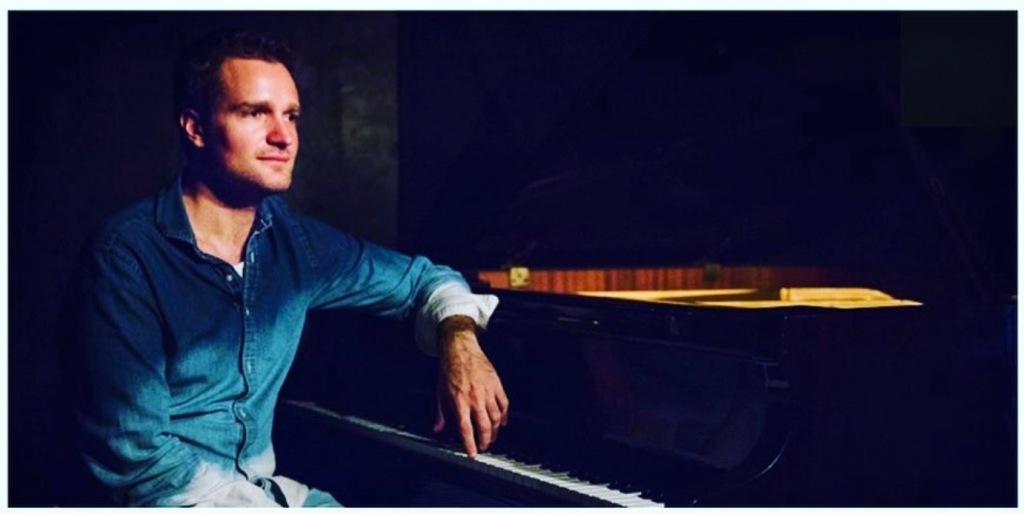
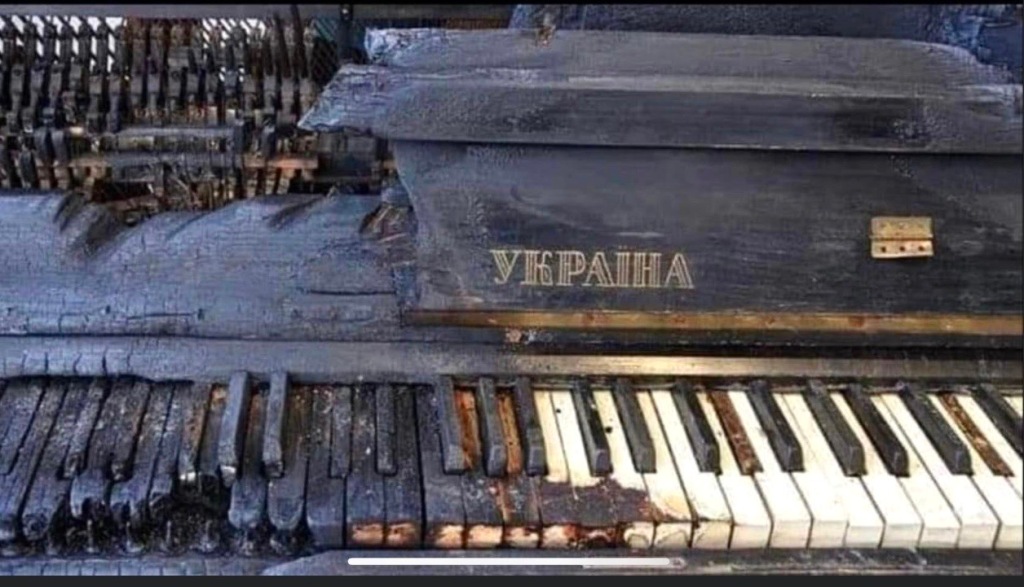
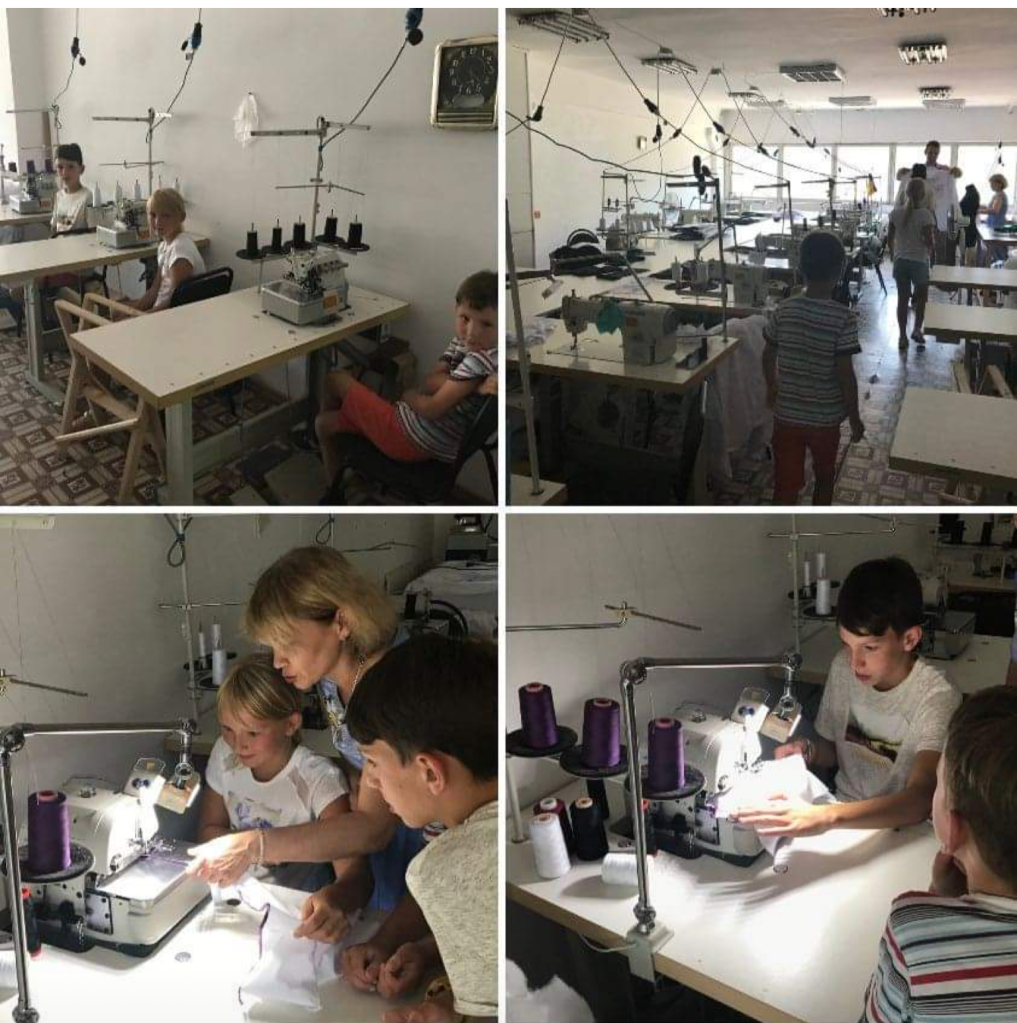

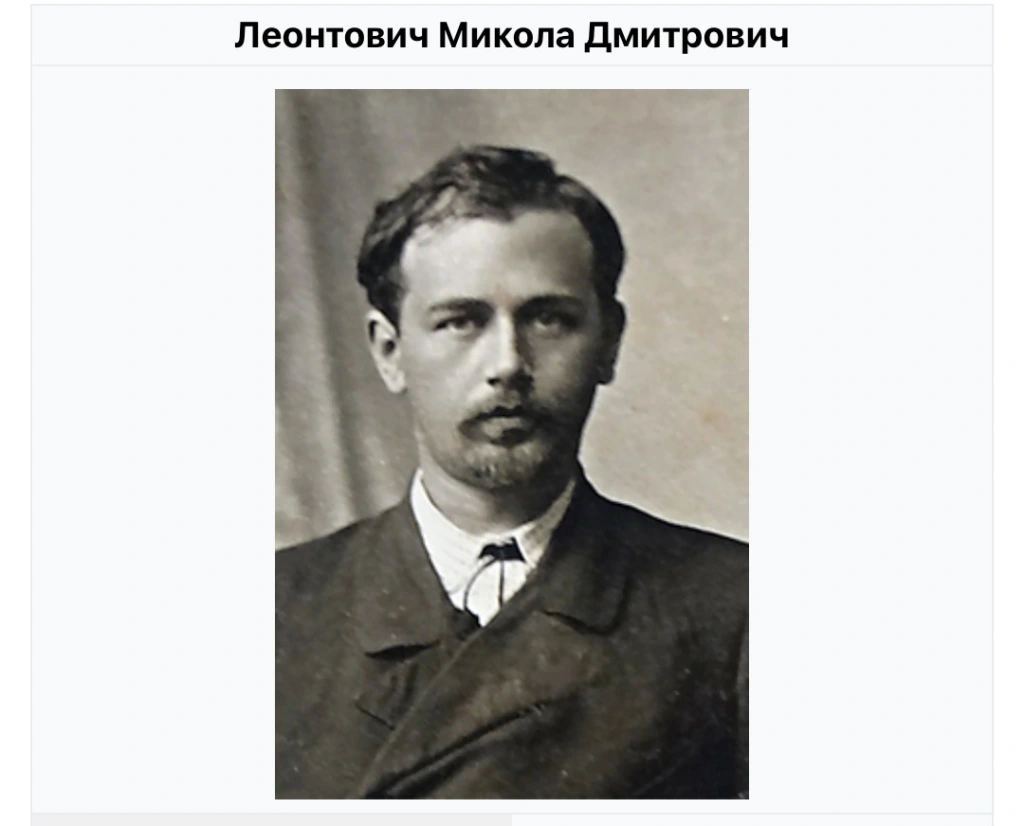

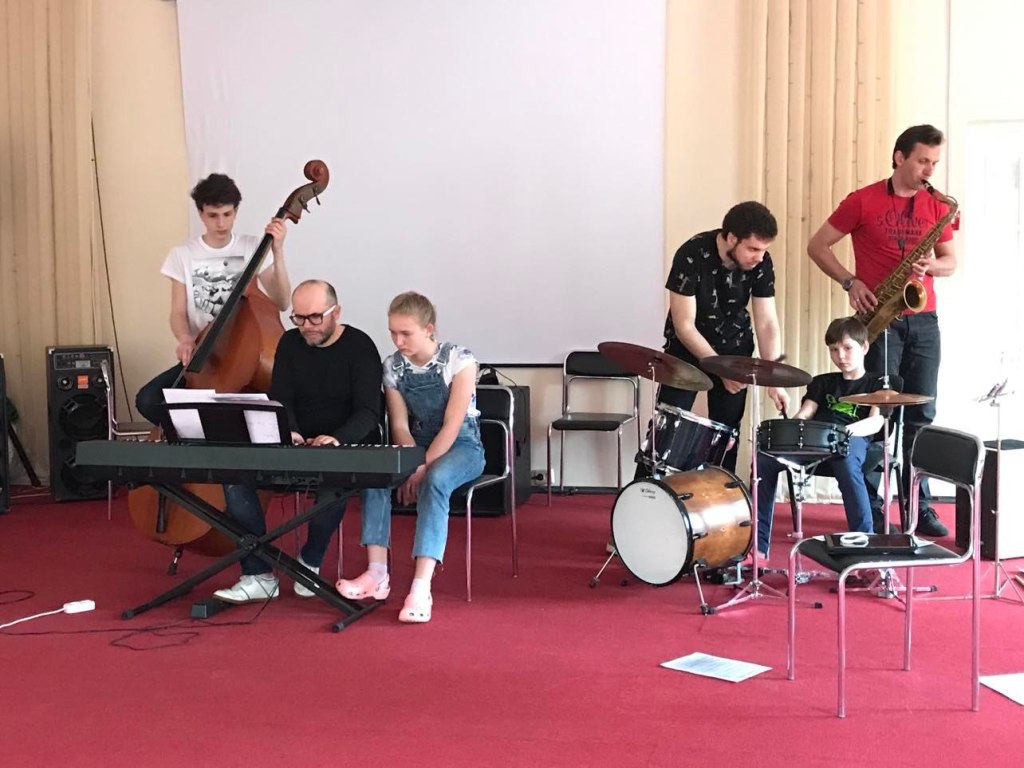







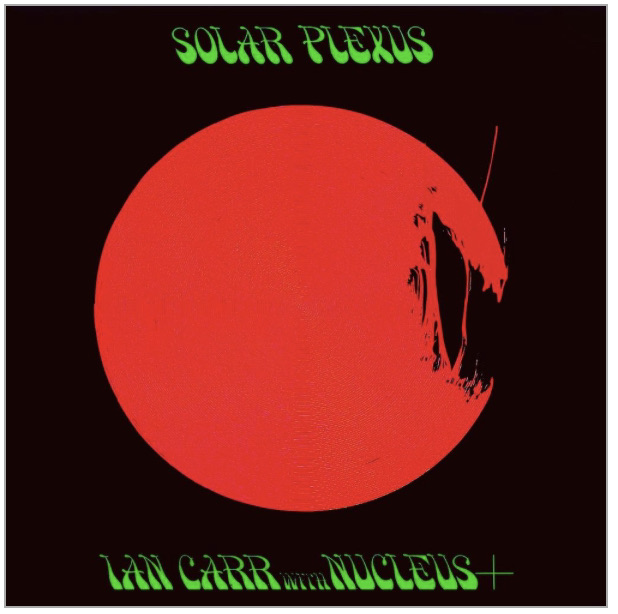







 The lockdowns won’t stop jazz! To assist musicians who’ve had performances cancelled, get their music heard around the globe. The Jazz Journalists Association created Jazz on Lockdown: Hear it Here community blog. for more, click through to
The lockdowns won’t stop jazz! To assist musicians who’ve had performances cancelled, get their music heard around the globe. The Jazz Journalists Association created Jazz on Lockdown: Hear it Here community blog. for more, click through to 


 Mooroolbark is a place, an album and a state of mind. It is an intersection of worlds and a testament to Barney McAll’s writing skills .
Mooroolbark is a place, an album and a state of mind. It is an intersection of worlds and a testament to Barney McAll’s writing skills .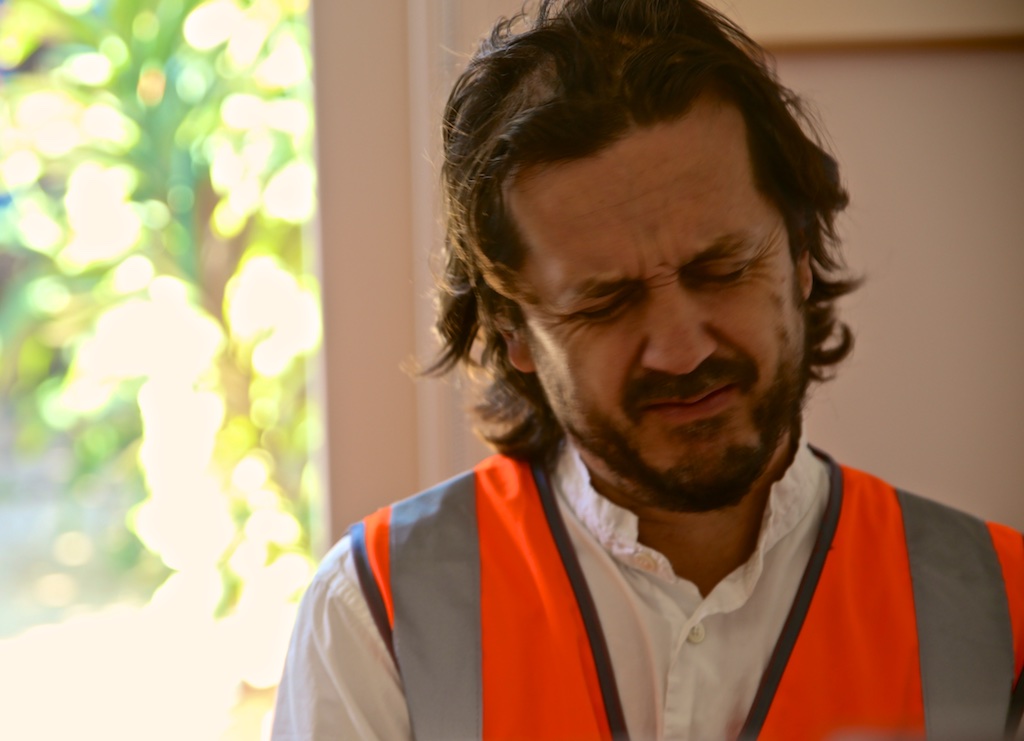 #ASIO stands for the Australian Symbiotic Improvisers Orbit, but even in the title the story deepens? Another ASIO comes to mind, as hard-won Australian freedoms vanish in the eternal quest for security. At a pre-release gig in Sydney’s Basement the band donned high-viz vests with #ASIO stencilled on them; high visibility music juxtaposed with secretive worlds. This #ASIO has some answers. The landscape of McAll’s new album ‘Mooroolbark’ is littered with these potent images and if you let your preconceptions go, they will come to you. These musical parables are modern ‘song lines’; age old stories told afresh. ‘Mooroolbark’ completes a circle. A return to familiar physical and spiritual landscapes. A reappraisal of the journey with old musical friends.
#ASIO stands for the Australian Symbiotic Improvisers Orbit, but even in the title the story deepens? Another ASIO comes to mind, as hard-won Australian freedoms vanish in the eternal quest for security. At a pre-release gig in Sydney’s Basement the band donned high-viz vests with #ASIO stencilled on them; high visibility music juxtaposed with secretive worlds. This #ASIO has some answers. The landscape of McAll’s new album ‘Mooroolbark’ is littered with these potent images and if you let your preconceptions go, they will come to you. These musical parables are modern ‘song lines’; age old stories told afresh. ‘Mooroolbark’ completes a circle. A return to familiar physical and spiritual landscapes. A reappraisal of the journey with old musical friends. This unit performs as if they are one entity. Every note serves the project rather than the individuals. The sum is greater than its considerably impressive parts. I have seen McAll perform a number of times and his sense of dynamics is always impressive He can favour the darkly percussive; using those trademark voicings to reel us in, then just as suddenly turn on a dime and with the lightest of touch occupy a gentle minimalism. On Mooroolbark everyone’s touch is light and airy, open space between notes, a crystal clarity that surprisingly yields an almost orchestral feel. Avoiding an excess of notes and making a virtue out of this is especially evident as they play off the ostinato passages (i.e ‘Non Compliance).
This unit performs as if they are one entity. Every note serves the project rather than the individuals. The sum is greater than its considerably impressive parts. I have seen McAll perform a number of times and his sense of dynamics is always impressive He can favour the darkly percussive; using those trademark voicings to reel us in, then just as suddenly turn on a dime and with the lightest of touch occupy a gentle minimalism. On Mooroolbark everyone’s touch is light and airy, open space between notes, a crystal clarity that surprisingly yields an almost orchestral feel. Avoiding an excess of notes and making a virtue out of this is especially evident as they play off the ostinato passages (i.e ‘Non Compliance). A transformation has occurred with ‘Non Compliance’; morphing from a tour de force trio piece into an other-worldly trippy sonic exploration. All of the musicians fit perfectly into the mix and this is a tribute to the arrangements and to the artists. Zwartz (an expat Kiwi who has a strong presence here) holds the groove to perfection and the drummers and percussionists, far from getting in each others way, lay down subtle interactive layers; revealing texture and colour. Barker on drums and percussion is highly respected on the Australian scene (as are all of these musicians). Adding the New York percussionist Mino Cinelu gives that added punch. On tracks 6 & 7 noted trombonist Shannon Barnett adds her magic and Hamish Stewart is on drums for the last track.
A transformation has occurred with ‘Non Compliance’; morphing from a tour de force trio piece into an other-worldly trippy sonic exploration. All of the musicians fit perfectly into the mix and this is a tribute to the arrangements and to the artists. Zwartz (an expat Kiwi who has a strong presence here) holds the groove to perfection and the drummers and percussionists, far from getting in each others way, lay down subtle interactive layers; revealing texture and colour. Barker on drums and percussion is highly respected on the Australian scene (as are all of these musicians). Adding the New York percussionist Mino Cinelu gives that added punch. On tracks 6 & 7 noted trombonist Shannon Barnett adds her magic and Hamish Stewart is on drums for the last track. Barney McAll is an award-winning, Grammy nominated Jazz Musician based in New York. He was recently awarded a one year Peggy Glanville-Hicks Composers Residency and he currently resides at the Paddington residency house in Sydney, Australia.
Barney McAll is an award-winning, Grammy nominated Jazz Musician based in New York. He was recently awarded a one year Peggy Glanville-Hicks Composers Residency and he currently resides at the Paddington residency house in Sydney, Australia. When the luck runs your way, an interview with a musician will mysteriously transform itself into something more. If you know how to read the signals and respond appropriately, you find yourself traversing musical galaxies; places where words and musical ideas merge. I was acutely aware of this when I interviewed Jonathan Crayford recently. He is the ideal person to spend time with if you like to explore the improbable connections between seemingly unrelated things. It was an interview where the rhythms of the moment guided what we discussed and the best part of a day flew by before I knew it. This cerebral world is where Crayford prefers to live. He is perpetually on the road, dreaming up and shaping musical projects as he goes. His life is truly the troubadour’s life. As I probed him for insights, one episode in particular threw light on how serendipity and happenstance can guide him.
When the luck runs your way, an interview with a musician will mysteriously transform itself into something more. If you know how to read the signals and respond appropriately, you find yourself traversing musical galaxies; places where words and musical ideas merge. I was acutely aware of this when I interviewed Jonathan Crayford recently. He is the ideal person to spend time with if you like to explore the improbable connections between seemingly unrelated things. It was an interview where the rhythms of the moment guided what we discussed and the best part of a day flew by before I knew it. This cerebral world is where Crayford prefers to live. He is perpetually on the road, dreaming up and shaping musical projects as he goes. His life is truly the troubadour’s life. As I probed him for insights, one episode in particular threw light on how serendipity and happenstance can guide him. I asked him why this type of project drew him so strongly. “I’ve been travelling for years and it’s the excitement of new projects and the risks associated with being in unfamiliar places that lures me. I like being in a new place, an exotic place, somewhere outside of my life’s experience. It is like a rebirth. New loves, new sounds new smells, new food and a new vantage point from which view life. The grist of creativity comes directly out of this”.
I asked him why this type of project drew him so strongly. “I’ve been travelling for years and it’s the excitement of new projects and the risks associated with being in unfamiliar places that lures me. I like being in a new place, an exotic place, somewhere outside of my life’s experience. It is like a rebirth. New loves, new sounds new smells, new food and a new vantage point from which view life. The grist of creativity comes directly out of this”.
 On April 15th Crayford returned to the CJC (Creative Jazz Club), but this time without bass or drums. The gig was billed as ‘solo piano’ with special guest. Roger Manins joining him for the final numbers of the second set. This was a first for the CJC as the club has never hosted a solo piano gig before. Interestingly a slightly higher entry fee was placed on the door, but far from deterring people it signalled that something special was to occur. You could have heard a pin drop during the performance. This audience really listened and they were amply rewarded for their attentiveness. This highlights the growing sophistication of CJC audiences and above all it demonstrates the deep respect that we have for Crayford as a performer.
On April 15th Crayford returned to the CJC (Creative Jazz Club), but this time without bass or drums. The gig was billed as ‘solo piano’ with special guest. Roger Manins joining him for the final numbers of the second set. This was a first for the CJC as the club has never hosted a solo piano gig before. Interestingly a slightly higher entry fee was placed on the door, but far from deterring people it signalled that something special was to occur. You could have heard a pin drop during the performance. This audience really listened and they were amply rewarded for their attentiveness. This highlights the growing sophistication of CJC audiences and above all it demonstrates the deep respect that we have for Crayford as a performer.











